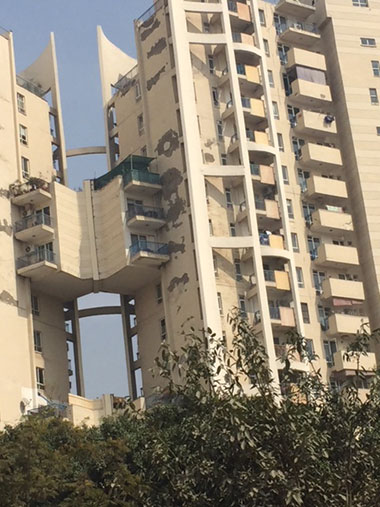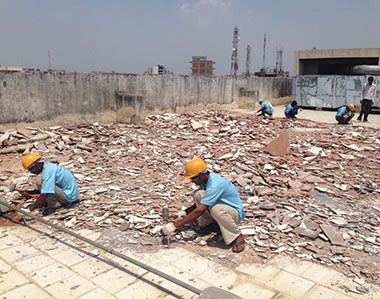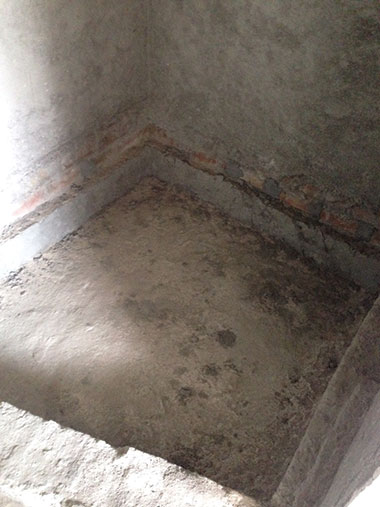Waterproofing Challenges in High-Rise and Suggested Remedial Measures

Why does this happen? Don’t the builders, developers, contractors, and owners take care of waterproofing? If they do, then what kind of waterproofing does the contractor use? Do they use a professional water-proofer, if at all?
In most of the cases, you will find that these stakeholders do not engage a professional water-proofer to undertake the most crucial part of any construction. In most of the projects, while the work for woodwork, metal fabrication, firefighting, water treatment, waste water treatment, and electrical, is awarded to specialized agencies, you will be surprised that waterproofing is kept in the scope of the civil contractor who does not have enough experience in handling this.
The specifications which are given in 90% of the tender documents are a cut-copy-paste job based on specifications that are more than 30 years old, and the rates given in the tender for this crucial work is sometimes less than the labor cost, as the contractors hire workers who do not know how to do waterproofing. So, all these things - the wrong specifications, low rates, and unskilled workers, result in a bad job of waterproofing and the subsequent failure to protect the building.
To a civil contractor, a project management consultant and an architect, it could be just a waterproofing job. But to a professional water-proofer, it’s a passion to perform. That’s why, most of the waterproofing companies have developed their own processes to study, evaluate and design waterproofing systems to create a building protection system, which not only performs and lasts, but also reduces the environmental impact on the property. The solutions would be more expensive than the services of a civil contractor, but the result would be long lasting, and therefore, cost-effective in the long term.
Water Proofing Issues
Bathroom Sunken Area: Generally, a water proof admixture is used to mix with cement and is brushed on the concrete surface to provide water proofing. In such cases, where the water proofing failure has already happened, there is no other solution except removing the tiles and reaching up to the concrete mother slab. The surface should be cleaned properly using a mechanical grinder. Among the best products to be used for water proofing for sunken areas in both preventive and remedial treatment are PAREX K 11 Flex, Ardex Endura WPM 004, SIKA Top Seal 107 and other similar products, which are essentially Two Component Acrylic polymer modified cementitious coatings.
The core cut holes around the pipes should be sealed with Polymer modified mortar or ready to use repair mortars such as PAREX LANKO 731 or equivalent. Another good practice would be to use Corner Tapes on the wall and floor joints, because these are the most vulnerable places for seepages.

There are many new-age chemicals and polymers of all the leading manufacturers that give better results and performance on roof and terrace slabs. Acrylics, Epoxies, Polyurethane, Poly Urea from all the manufacturers have amazing properties such as elongation, tensile strength, tear strength, etc.
For an existing building, where water failure has already happened, once again, the entire application of PCC, BBK or others should be removed to expose the concrete slab. The surface should be cleaned properly and left to dry for a couple of days so that the trapped moisture escapes. The surface may have cracks and should be repaired with Polymer Modified Mortars or Ready-mix repair mortars such as LANKO 731, SIKA 122 HS or equivalent. After the surface is prepared, you can use Acrylic Coatings such as PAREX K10 Sovacryl (Liquid applied flexible acrylic waterproofing and sealing membrane) or Polyurethane coatings such as PAREX K 10 Polyurethane Plus (Single Component Liquid applied Polyurethane modified waterproofing and sealing membrane). The treatment should be covered with protective plaster.

Basement Podiums: Podiums, generally, are used for laying gardens and green areas. Lots of water is regularly used for the green areas. In case the waterproofing has not been done properly, the seepage starts immediately after the garden is laid. It has been observed in many cases that the water damages the cars parked in the parking below the podium.
Utmost care is required while doing waterproofing. The best would be to remove the garden and treat the surface from the positive side using PAREX K10 GRS 2000SF, a two component Polyurethane Root Resistant Waterproof Membrane for Roof Garden & Plater Areas. The product has high elongation of 400% and gives protection against Root Penetration. However, where it is not possible to remove the garden and treat from the positive side, it is recommended to use Polyurethane Injection grouting from the negative side - in most of the cases only the affected area on a grid of 100mm x 100mm.
In conclusion, I would like to say that all the stakeholders in a project should not ask a water-proofer, “What is the cost of waterproofing?” rather, “What is the cost of NOT waterproofing?”
NBM&CW April 2018



















